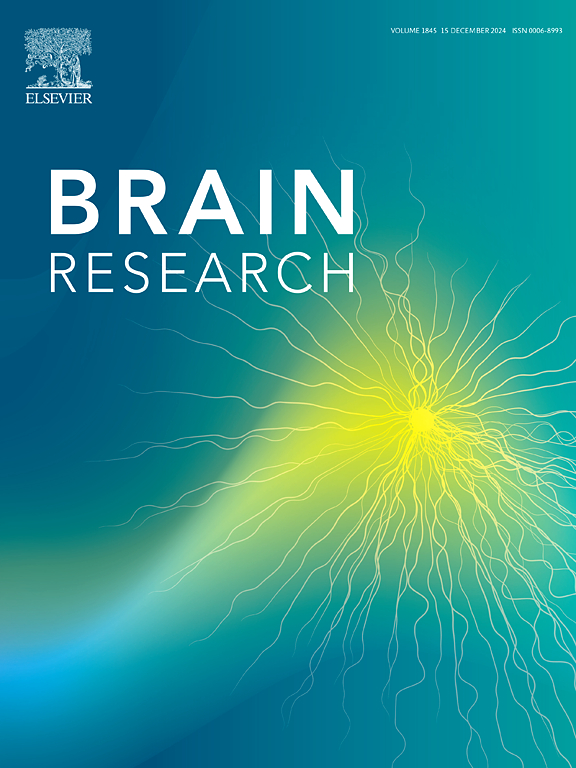双任务串联步态中前额叶皮层活动的年龄差异:近红外光谱研究。
IF 2.7
4区 医学
Q3 NEUROSCIENCES
引用次数: 0
摘要
双任务(DT)条件下的串联步态(TG)可能有助于研究动态平衡和活动的重要方面,特别是关于病理性运动和认知衰老过程。我们的研究目的是确定双任务时TG干扰引起的行为和神经变化的年龄相关差异。20名年轻人(YA,年龄21.3 ± 1.86)和12名中年人(MA,年龄55.3 ± 3.81)被要求执行TG认知任务((a)倒背字母表,(b)交替背诵数字和字母(口头TMT-B),以及(c)从给定的3位数向后计数,每3步1次),DT (TG +认知任务)各30 s。使用8源 × 8个探测器fNIRS系统记录额叶皮层的激活。在行为数据上,与YA相比,MA显示出的准确运动反应数量明显减少,尽管他们的认知反应仍然相当。从神经学的角度来看,线性混合模型仅在左背外侧pfc中显示了显著的任务和群体相关的相互作用效应。与YA相比,MA在DT期间随着时间的推移显示出较低的激活,这可能归因于额叶神经资源的限制。这种下调可能是由于过载,表明MA正在接近其神经资源的容量极限,特别是在面对复杂的运动任务需求时。本文章由计算机程序翻译,如有差异,请以英文原文为准。

Age differences in prefrontal cortex activity during dual-task tandem gait: An fNIRS study
Tandem Gait (TG) under dual-task (DT) conditions may facilitate the investigation of important aspects of dynamic balance and mobility, particularly concerning pathological motor and cognitive aging processes. Our study aims to identify age-related differences in behavioral and neural changes caused by interference during dual-task while TG. 20 young (YA, age 21.3 ± 1.86) and 12 middle-aged adults (MA, age 55.3 ± 3.81) had to perform TG cognitive tasks ((a) recite the alphabet backward, (b) recite numbers and letters alternately (oral TMT-B), and (c) count backward from a given 3-digit number in steps of 3), and DT (TG + cognitive tasks) for 30 s each. The cortical activation of the frontal lobe was recorded using an 8 sources × 8 detectors fNIRS system. On the behavioral data, MA displayed a notably reduced number of accurate motor responses compared to YA, though their cognitive responses remained comparable. From a neural perspective, the linear mixed model revealed significant task- and group-related interaction effects only in the left dorsal lateral PFC. Compared to YA, the MA showed lower activation over time during DT, which can be attributed to the limitation of neural resources in the frontal lobe. This downregulation may be due to overload, indicating that MA are approaching their neural resources’ capacity limit, particularly when confronted with complex motor task demands.
求助全文
通过发布文献求助,成功后即可免费获取论文全文。
去求助
来源期刊

Brain Research
医学-神经科学
CiteScore
5.90
自引率
3.40%
发文量
268
审稿时长
47 days
期刊介绍:
An international multidisciplinary journal devoted to fundamental research in the brain sciences.
Brain Research publishes papers reporting interdisciplinary investigations of nervous system structure and function that are of general interest to the international community of neuroscientists. As is evident from the journals name, its scope is broad, ranging from cellular and molecular studies through systems neuroscience, cognition and disease. Invited reviews are also published; suggestions for and inquiries about potential reviews are welcomed.
With the appearance of the final issue of the 2011 subscription, Vol. 67/1-2 (24 June 2011), Brain Research Reviews has ceased publication as a distinct journal separate from Brain Research. Review articles accepted for Brain Research are now published in that journal.
 求助内容:
求助内容: 应助结果提醒方式:
应助结果提醒方式:


